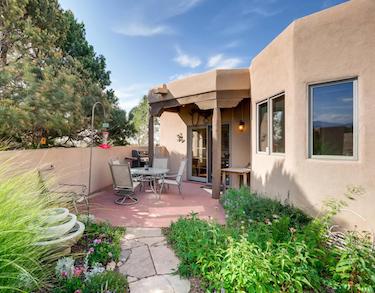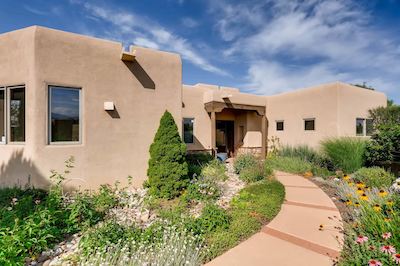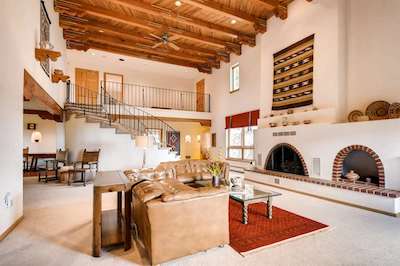When Lynne and Peter bought their home in Santa Fe, they moved into a 1,400-square foot home that was just right for their needs. With an open layout kitchen and living/dining area, the home was ideal for keeping track of two active toddlers once they started their family. Their boys shared a bedroom.
“As the kids got older, their room was too small for them both of them to get dressed at the same time,” Lynne said. “So they came into our room, which wasn’t much bigger and felt a whole lot smaller during the morning rush.” The time was right to buy a larger home.
Lynne and Peter fit the profile of upsizers, homebuyers who move to larger home. Upsizers can reflect a wide variety of homebuyers. Some need more space for growing families. Some are retirees who want more room for leisure activities. Others are millennials who skip the starter home and buy something larger as first-time homebuyers.
We hear from our share of Santa Fe homebuyers looking for a bigger home. As with any home purchase, preparation is a key step when trading up to a larger home. These steps can help you navigate the upsizing process.
 1. Establish Your Homebuying Criteria
1. Establish Your Homebuying Criteria
What are you looking for in a larger home? Develop a baseline list of needs and wants, including desired square footage and number of bedrooms and bathrooms. Think beyond the four walls of a house. For example, you might want to consider:
- where in Santa Fe you want your larger home to be located
- how that location impacts commute time
- how long you plan to stay in the home
Even if you’re a current Santa Fean, our Santa Fe new resident’s guide can help as you think about what you want in a larger home. You’ll find information and resources about recreational opportunities, resident resources, and family-friendly activities.
Check out our Santa Fe listings sorted by neighborhood, too. You can select and explore a range of areas and see available homes.
2. Be Aware of Costs That Come with a Larger Home
Larger homes usually come with higher price tags. Since more valuable homes are assessed higher property taxes, be sure you can afford the increase in your annual tax bill. Other costs associated with owning a larger home include:
- more expensive home insurance
- higher utility costs
- home maintenance costs
 3. Research the Process of Selling and Buying a Home at the Same Time
3. Research the Process of Selling and Buying a Home at the Same Time
We rounded up a few resources to get you started:
How to Handle Buying and Selling a Home at the Same Time This Lifehacker.com article lays out the pros and cons of both selling first and buying first.
Moving Up: Selling Your Home and Buying Another This Nolo.com article suggests researching the current real estate market where you want to buy. Does the market favor buyers or sellers? As a buyer and a seller, you’ll find strategies to help you manage your dual roles.
4. Establish Your Budget and Start Your Home Search
Look at your overall financial picture as you establish your homebuying budget. Bring your budget and your homebuying criteria to one of our agents and start your home search. You may need to revisit your homebuying criteria based on your budget. If that’s the case, try prioritizing your needs and wants. Knowing what you can and cannot compromise on will help you streamline the search process.

 1. Establish Your Homebuying Criteria
1. Establish Your Homebuying Criteria 3. Research the Process of Selling and Buying a Home at the Same Time
3. Research the Process of Selling and Buying a Home at the Same Time